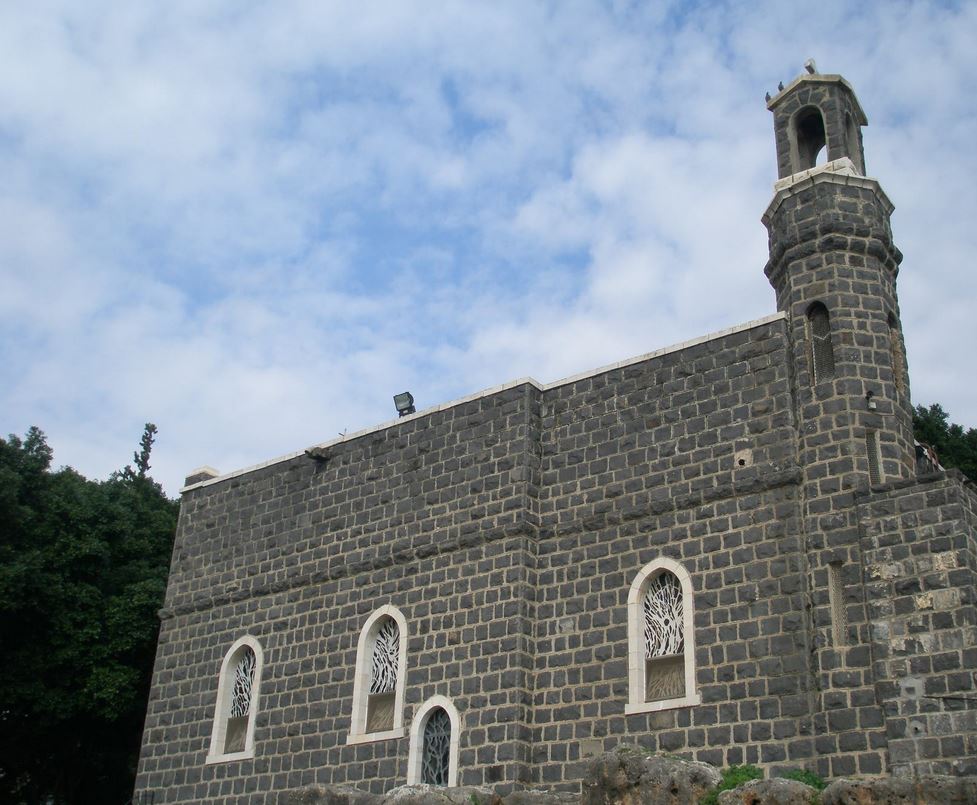Tiberias
Tiberias on the sea of galilee
Tiberias is considered one of the holiest places in Israel because of its proximity to the Sea of Galilee and being the site of many religious, historical events. It was built by Herod Antipas, the son of Herod the Great, as the capital of the Galilee region of Palestine and he named it after his patron, Roman Emperor Tiberius.
We traveled all around Tiberias and created the perfect tours for you.
Initially, Jews didn’t want to relocate to Tiberias because the cemetery in town made the site ritually unclean, thereby forcing Antipas to take drastic measures just to populate his new capital. Eventually, the Jews migrated on their own when they were exiled from Jerusalem. They established scholarly institutions and they flourished despite the turbulent years of wars
and earthquakes. For centuries, Tiberias was known as the largest Jewish city in the Galilee region.
Planning your Trip to Tiberias
If you’re planning on visiting Tiberias, you might want to go over these tips and suggestions to make the most out of your trip.
How to Get There
The first stop for international visitors traveling by plane is the Ben Gurion International Airport in Tel Aviv. From Tel Aviv, there are regular bus services that you can take to get to Tiberias. Bus services are also available from the nearby cities of Jerusalem, Haifa, Acre and practically every other city.
By Plane
If you’re coming in by plane, your first stop will be the Ben Gurion International Airport, roughly 40-50 minutes away from the city center. Israel’s national airline, El Al, is based here and the airport is also served by 50 other international carriers making direct flights from the US, Europe, Asia and Africa. However, for passengers flying in from Australia or South Africa or from those countries with no diplomatic relations with Israel, you have the option to fly to Europe first and then purchase a connecting flight to Israel.
By Bus
The bus network is still the best mode of transportation when you want to go around Tiberias.
By Ship
Another option in getting to Jerusalem is by coming in from a Mediterranean cruise ship, with Israel as one of its port stops. Several other shipping lines also offer travel itineraries from Europe to Haifa Port. If you own a private ship, boat or yacht, then it’s also possible to reserve in advance a berth in the marina of your choice.
By Taxi
Taxis or “sheruts” which are very much like minivans that you can hail from anywhere. They usually follow the normal bus route but may stop anywhere as well.
The bus network is still the best mode of transportation when you want to go around Tiberias. It’s the least expensive and predictable because they have schedules to adhere to. However, in honor of the Sabbath, they don’t operate from Friday sundown to Saturday sundown.
Your next alternative is to ride shared taxis or “sheruts” which are very much like minivans that you can hail from anywhere. They usually follow the normal bus route but may stop anywhere as well. It’s faster than the bus because you’re only limited by the itineraries or stops of the other passengers, which are still considerably less than a normal bus. Another plus is that they operate 7 days a week, regardless of the Sabbath.
If you don’t want to share a cab, then regular taxis are also available. They’re generally more expensive than a bus and you have to take extra caution when dealing with the driver. Some are known to take advantage of unsuspecting tourists. The best way is to know in advance how much your trip will take, make sure that your driver uses the meter, and even to know in advance the route that you’re traveling. Taxis are also equipped with a meter receipt so be sure to get one after your trip just in case you leave something behind in the taxi cab.
Lastly, you may be more comfortable renting and driving your own car while traveling. It gives you a sense of freedom and you’re not tied to strict schedules. Make sure that you’re qualified to even drive a car while in Israel (in general). Brush up on specific road rules, signages and over-all directions.
Over the years, as people discovered the relaxing and calming location that is Tiberias, it has become a favorite tourist destination North of Israel. There are many religious points of interest as well as amazing spa resorts, water sports activities and hot springs to soothe your aches and pains.
Historical Religious Landmarks
If you’re in Tiberias on a pilgrimage of the Sea of Galilee, these are just some sites that you may wish to visit.
Mount of Beatitudes – is a hill located on the northwestern shore of the Sea of Galilee that is believed to be the site where Jesus delivered his Sermon on the Mount. The Roman Catholic Franciscan chapel now sits on top of the hill.
Church of Multiplication – in the area of Tabgha, on the northwestern shore of the Sea of Galilee, sits the Church of Multiplication, which Christians believe to have been the traditional site of the miracle of the multiplication of the loaves and fishes.
Chapel of the Primacy of St. Peter – also in Tagbha, this chapel was believed to have been where Jesus Christ appeared for the third time after His resurrection and during which time he conferred on St. Peter the primacy over the Church.
Yardenit – is believed to have been the place where Jesus was baptized by St. John the Baptist. The Baptismal site is located at the southern end of the Sea of Galilee where the Jordan River flows out to the Dead Sea.
Jewish Sages tombs – Tiberias is home to significant Jewish Rabbis and that is why it is also considered one of the holiest places for Judaism. Some of these burial sites include the tombs of: Philoshopher and Physician Maimonides, Rabbi Ben Akiva, Rabbi Yochanan Ben-Zakai and Rabii Meir Baal HaNess.
Explore Tiberias
For these places alone, visiting Tiberias is a great place to visit and stay in for 2 or 3 days
What you should see in Tiberias
Hamat Tiberias National Park
Is the site of seventeen hot springs
Jewish Sages tombs
Philoshopher and Physician Maimonides
Mount of Beatitudes
The Roman Catholic Franciscan chapel
Church of Multiplication
Christians believe to have been the traditional site of the miracle
Arts and Culture
Visiting Jerusalem is not just for the spiritual upliftment of its visitors, it also gives them a chance to learn more about its art and culture through its museums and theaters.
Israel Museum – The National Museum of Israel, considered the largest museum in Israel, showcases a wide collection of archaeological and ceremonial artifacts. The Dead Sea Scrolls is housed in the museum’s Shrine of the Book. It also features exhibits for children’s art education, has a large outdoor sculpture garden and the scale model of the Second Temple recently found its place within the Museum as well.
Bible Lands Museum – if you want to appreciate and understand the Bible in relation to Middle Eastern culture and its lands then this is the place you should visit.
Yad Vashem – Is Israel’s Holocaust museum. The complex features exhibits on the genocide of the Jews to commemorate and preserve the memory and story of the victims. It also has an art gallery filled with works from those who perished.
L.A. Mayer Memorial Museum of Islamic Art – contains a comprehensive collection of Islamic art from its start to the 19th century. You’ll find miniature artware, tools and weapons from Islamic lands.
The Tower of David – is a complex of towers located in the Old City, which is considered an archaeological park filled with ancient remains. The Museum traces Jerusalem’s eventful history through state-of-the-art displays that contrast with the ambience of the ancient walls and views of the city.
Child-friendly attractions
With as much as 30 luxury hotels and bed-and-breakfasts to choose from, you’re sure to be in for a real treat because most of these lodgings are located right on the beach, on the shores of the Sea of Galilee. Expect to spend some time with the whole family on the well-manicured and expansive lawns, indulge in water activities at the water parks, take a chance with extreme water sports for fun and replenish yourselves from the many restaurants and bars along the Promenade. The family might also like to enjoy a boat ride around the Sea of Galilee especially during sunsets.
The Dona Gracia Museum is a museum in a former castle that tells the story of Gracia Nasi who dedicated her life to saving many Jewish refugees from the Spanish Inquisition.
If you’re in the mood for archaeological buildings, the St. Franciscan Monastery of St. Peter, right on the Promenade will be worth the visit. Not far from the monastery, visit the Crusader castle, an 18th century fortress built by Daher el-Amr, on which an art gallery and restaurant now occupy its remains.
Natural Attractions
Since Tiberias has evolved into a resort town setting, amidst the religious landmarks in the area, popular attractions include parks and hot springs.
Hamat Tiberias National Park – South of the old city of Tiberias lies the Hamat Tiberias National park which is the site of seventeen hot springs. A museum is also built here to educate visitors about the history of the baths.
Tiberias Hot Springs spa – is a renowned health and wellness center that offers thermo-mineral pools to rejuvenate your body. To complement the therapeutic qualities of the water, luxurious body treatments are also offered to patrons while enjoying the relaxing atmosphere of the place and the magnificent views of Lake Kinneret.
Considering the size of Tiberias, it comes as no surprise that the shopping district will be concentrated near the marina and the promenade. If you’re in the mood for freshly caught fish for lunch or dinner, troop to the romantic promenade near the marina where many cafes and restaurants serve freshly caught fish dishes.

Aside from the promenade, you may visit the principal streets of the town, Hagalil and HaBannim, which are considered the commercial center of the town. It is filled with restaurants, pubs, ice cream parlors and souvenir shops.
Close to this district is the famous Tiberian fish market for your dose of Tiberia’s fishing industry. Around the area is a popular falafel complex whose stall owners willingly offer taste tests to tourists in hopes of attracting them to buy their wares.



